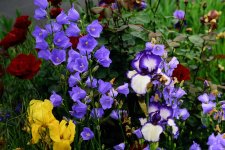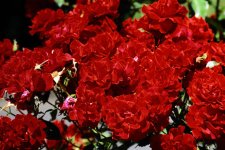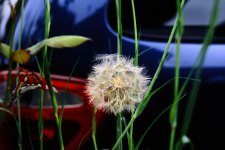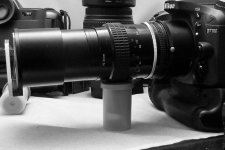coolbus18
Senior Member
So in another effort to calm my G.A.S. I purchased a Nikon ES-1 Slide Copier.Yes I do have an Epson V600 scanner but the thought of using The Beast to copy slides was intriguing. Well I have had it for a few days and have shot the slides in Daylight and tonight I used a cfl lamp with daylight bulb and a very matte white shade on it and my light box light.I shot in "A" and futzed with different apertures. Then it hit me---Use the force !!!! So I left it in "A" and set it to Auto ISO . Yes the power of the Beast's processing power worked!!!!! So here are some Velvia 50 slides that I originally took with a F5. The lens used here is a Micro 55mm f/2.8 on a PK 13 extension .The ES-1 screws into the front of the lens and is push/pull and then the focus ring of the lens gives fine focus and the focus pointers in the viewfinder will do their appointed task. By far letting the D7100 do it's thing paid off. I also shot in RAW with STD color as Vivid oversaturated the stink out of it. Oh and converted to jpeg in Nikon NX-D Here's the slides:


 so there is nothing to my eyes like looking at a slide but I gotta say that I am happy with results so far Those punchy greens are there , the reds aren't bleeding and the rest of the spectrum translated better than some of my scanning efforts. Nikon has them for USD $89, but I got mine on the bay for less than 1/2 of that. It also is designed to work with the Micro 60mm lens Yes I would recommend this to a friend as I would the Micro 55mm f/2.8 Ais which is a cool versatile sharp lens ,but that's for another thread. Enjoy!:encouragement:
so there is nothing to my eyes like looking at a slide but I gotta say that I am happy with results so far Those punchy greens are there , the reds aren't bleeding and the rest of the spectrum translated better than some of my scanning efforts. Nikon has them for USD $89, but I got mine on the bay for less than 1/2 of that. It also is designed to work with the Micro 60mm lens Yes I would recommend this to a friend as I would the Micro 55mm f/2.8 Ais which is a cool versatile sharp lens ,but that's for another thread. Enjoy!:encouragement:


 so there is nothing to my eyes like looking at a slide but I gotta say that I am happy with results so far Those punchy greens are there , the reds aren't bleeding and the rest of the spectrum translated better than some of my scanning efforts. Nikon has them for USD $89, but I got mine on the bay for less than 1/2 of that. It also is designed to work with the Micro 60mm lens Yes I would recommend this to a friend as I would the Micro 55mm f/2.8 Ais which is a cool versatile sharp lens ,but that's for another thread. Enjoy!:encouragement:
so there is nothing to my eyes like looking at a slide but I gotta say that I am happy with results so far Those punchy greens are there , the reds aren't bleeding and the rest of the spectrum translated better than some of my scanning efforts. Nikon has them for USD $89, but I got mine on the bay for less than 1/2 of that. It also is designed to work with the Micro 60mm lens Yes I would recommend this to a friend as I would the Micro 55mm f/2.8 Ais which is a cool versatile sharp lens ,but that's for another thread. Enjoy!:encouragement:
